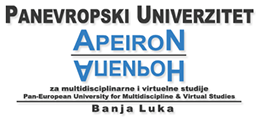 Reduction of Hexavalent Chromium by Nano Zero-Valent Iron
Reduction of Hexavalent Chromium by Nano Zero-Valent Iron
Reduction of Hexavalent Chromium by Nano Zero-Valent Iron
Martin Stojchevski1, Stefan Kuvendziev1, Zoran Bozinovski2, Mirko Marinkovski1, Kiril Lisichkov1
1Faculty of Technology and Metallurgy, Ss. Cyril and Methodius University in Skopje, N. Macedonia, martin@tmf.ukim.edu.mk
2Eko Bio Link, Skopje, N. Macedonia
ABSTRACT: Hexavalent chromium is a toxic form of chromium that has significant health and environmental
implications. Reducing hexavalent chromium to trivalent chromium is a crucial step in immobilizing and removing
Cr(VI) from water resources. Nano zero-valent iron (nZVI) as an electron-donating agent was used for Cr(VI)
reduction in aqueous solution. The effect of contact time and initial concentration of nano zero-valent iron on Cr(VI)
reduction was studied. The process of Cr(VI) reduction was designed and optimized using response surface methodology.
The results indicated an enhancement in the Cr(VI) reduction ratio with increasing initial concentration of nano
zero-valent iron and contact time. A second-order polynomial equation was used to model the correlation between
the independent and dependent variables. The utilized model effectively predicted the response variable based on the
input variables with a high coefficient of determination (R2) of 0.9475 and a correlation coefficient (R) of 0.9734.
Additionally, the accuracy of the fitted model was demonstrated by the low values of the mean squared error (MSE)
at 0.04315 and the sum of squared errors (SSE) at 0.06562. The optimal conditions for reducing Cr(VI) in aqueous
solution using nano zero-valent iron were determined to be an initial nZVI concentration of 15 mg/L and a contact
time of 209 min.
implications. Reducing hexavalent chromium to trivalent chromium is a crucial step in immobilizing and removing
Cr(VI) from water resources. Nano zero-valent iron (nZVI) as an electron-donating agent was used for Cr(VI)
reduction in aqueous solution. The effect of contact time and initial concentration of nano zero-valent iron on Cr(VI)
reduction was studied. The process of Cr(VI) reduction was designed and optimized using response surface methodology.
The results indicated an enhancement in the Cr(VI) reduction ratio with increasing initial concentration of nano
zero-valent iron and contact time. A second-order polynomial equation was used to model the correlation between
the independent and dependent variables. The utilized model effectively predicted the response variable based on the
input variables with a high coefficient of determination (R2) of 0.9475 and a correlation coefficient (R) of 0.9734.
Additionally, the accuracy of the fitted model was demonstrated by the low values of the mean squared error (MSE)
at 0.04315 and the sum of squared errors (SSE) at 0.06562. The optimal conditions for reducing Cr(VI) in aqueous
solution using nano zero-valent iron were determined to be an initial nZVI concentration of 15 mg/L and a contact
time of 209 min.
Keywords: hexavalent chromium Cr(VI), nano zero-valent iron (nZVI), reduction, process design and optimization
| Attachment | Size |
|---|---|
| Pages from QOL-Volumen 15_Issue 3-4 JUL 2024-WEB-6.pdf | 594.21 KB |
